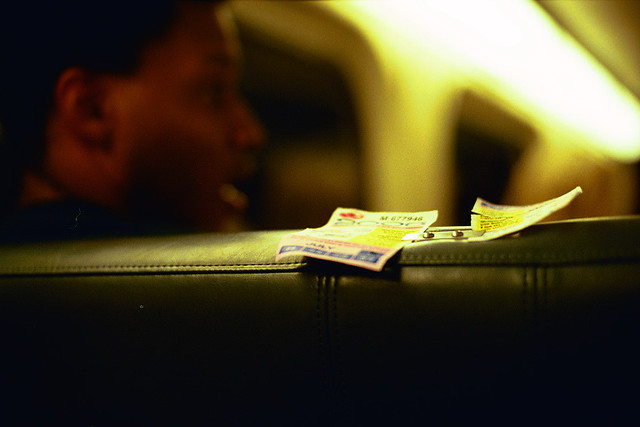Metra, the regional commuter train operator, is seeking a consultant to develop "creative recommendations" on how to change its fare structure. The consultant would be in charge of finding the pros and cons of the current fare structure, comparing it to Metra's commuter rail peers around the country, and building a model that allows Metra to test how different fare policies would affect ridership and revenue. The Request for Proposals is due at the end of the month.
There are some drawbacks to Metra's current fare policy. Trips that have a nearly equivalent route via the Chicago Transit Authority 'L' and bus cost over $1 more, which in some cases means people are opting to take a slower but cheaper trip via CTA. There's also no transfer discount except for those who buy $55 Link-Up passes to be used on CTA in combination with a monthly Metra pass during rush hours only.
Recently Metra raised the fares for trips within and between Zones A and B at a higher percentage than other zones, partly because of the need to stick to $0.25 increments. A coalition of South Side community organizations has asked transit agencies and legislators to study transfer discounts, and integrating fares with CTA and Pace because they say the Metra Electric line is hampered by a fare structure more appropriate for suburban lines. The Kenwood, Hyde Park, South Shore, and South Chicago neighborhoods are entirely within Zones A and B.
Metra spokesperson Michael Gillis said the RFP offers room for a unique fare policy, and that any recommended changes would "reflect our efforts to modernize operations and increase ridership. We want to see creative and innovative fare structure scenarios that can bring some excitement to our product."
Changing the fares, or allowing new kinds of fares – like transfer discounts – could have positive ramifications for the nine million people who live in the region. People would have new transit travel options if transferring between a Metra train and a CTA or Pace bus didn't require two full fares.
Unfortunately, Gillis said that reviewing transfers is beyond the scope of the RFP. "This is really meant to take a look at Metra's internal fare policies to see if we can come up with some creative and innovative ways to meet the needs of our customers while still meeting our business and statutory requirements."
One of Metra's peers is Metrolink, a commuter rail system serving the Los Angeles metro region. They have a regional fare card, similar to Ventra. Customers who pay a Metrolink fare can transfer for free to all of the bus, light rail, and subway lines operated by the Los Angeles County Metropolitan Transportation Authority (branded Metro), as well as bus lines run by 14 other regional operators. Metrolink has 55 stations on 7 lines, while Metro has 80 train stations on six lines and many more bus stops.
Gillis said that part of the reason for the Metra study is "to access the capital required to invest in the cost of modernization – including new train cars, infrastructure improvements and expanded service."
An Illinois law passed in 2011 required the Regional Transportation Authority – which oversees CTA, Metra, and Pace – to develop a transfer fare policy by January 2013, and a "universal fare" system by January 2015. The Ventra card and app largely satisfy the latter requirement, but there's still no transfer fare policy between CTA, Metra, and Pace. However, as Gillis pointed out, the state RTA act "gives the boards of CTA, Metra and Pace the responsibility for setting the fares for each agency."
There's a benefit in having fare structures set by a regional agency. In Paris' metropolitan region, known as the Île-de-France, the autonomous government agency that directs regional transit operations started a universal fare card last year that offers access to nearly all transit providers – including subways, buses, and commuter rail – for a single monthly fee. This means there are unlimited free transfers, and the zone structure was eliminated.
Commuting patterns in the Paris region are no longer just suburb-to-center, but also suburb-to-suburb. This is also the case in the Chicago region nowadays. Transport Politic blogger Yonah Freemark recently noted "a zonal system radiating from the center is a relic of that antiquated economic geography."
Freemark wrote that while the Parisian universal fare card will save some commuters hundreds of euros a month, it will also cost the government hundreds of millions of euros more to provide the service, a cost that will be paid for by an increase in the employer-paid income tax. On the plus side, the additional ridership spurred by the new policy is likely to reduce the number of driving trips.
Implementing a cross-agency fare system in Chicagoland wouldn't be free but it's surely worth studying.
![]()
Did you appreciate this post? Streetsblog Chicago is currently funded until April 2016. Consider making a donation through our PublicGood site to help ensure we can continue to publish next year.




